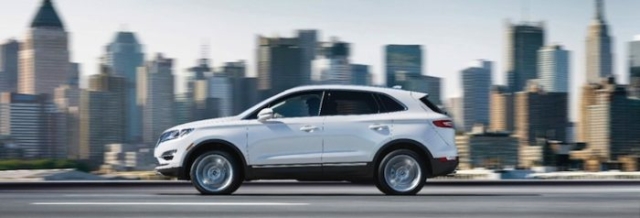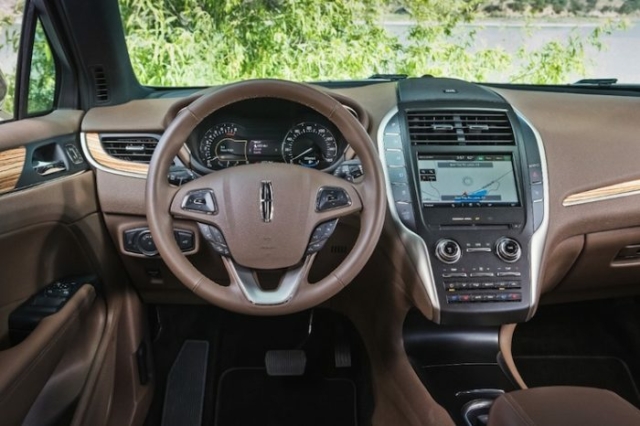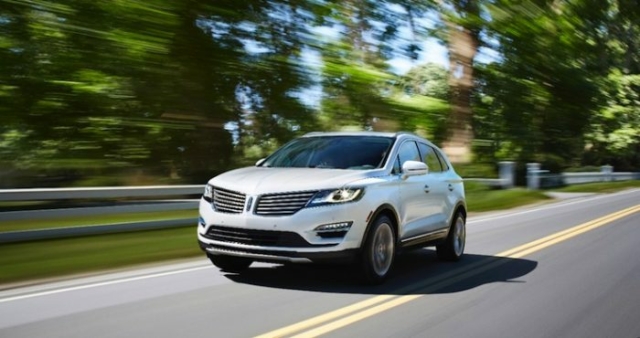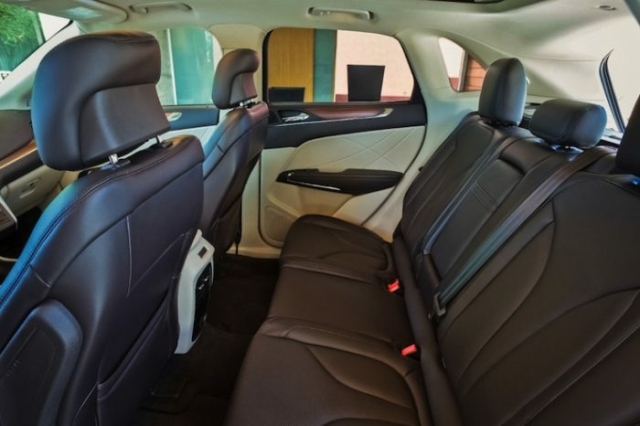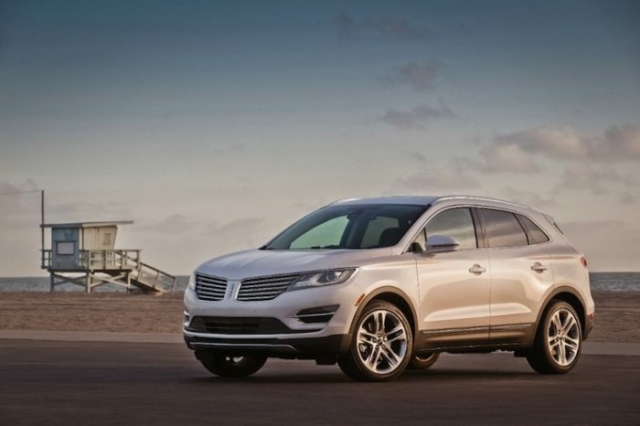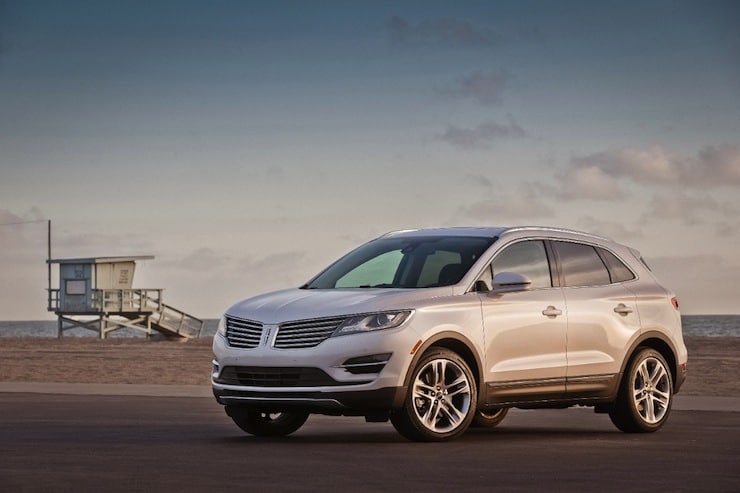Editor’s Note: The MKC is now replaced by the Lincoln Corsair as of 2020.
Pros:
- Strong engine
- Good looks
- Sharp handling
Cons:
- Fuel consumption
- Small front seats
- Fussy SYNC system

To paraphrase Mark Twain, rumours of Lincoln’s demise have been greatly exaggerated for several years, thanks to slow sales that can be blamed on a stodgy image that luxury car buyers are unwilling to overlook. The brand soldiers on, though, thanks to the stubbornness of parent company, Ford, who seems unwilling to drop out of the premium car market place.
If solid product was all you need, Lincoln would have it made, given its lineup of Ford-based models, the newest of which is the MKC compact luxury crossover. Built on a platform shared with the always-popular Ford Escape, many of us industry types figure this will be the vehicle to “save” Lincoln, and end those rumours once and… well, for a while, at least.
MKC power and performance
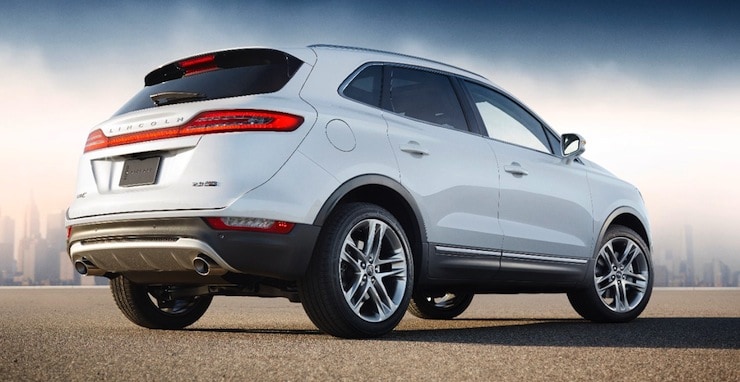
- Engine: 2.3-litre turbocharged four-cylinder
- Power: 285 horsepower
- Torque: 305 pound-feet
- Transmission: six-speed automatic
- Brakes: Four-wheel disc brakes
- Steering: Electric power-assist rack-and-pinion
- Suspension: MacPherson struts (front); multi-link (rear)
Like the Escape, entry-level versions of the MKC use a 2.0-litre turbocharged four-cylinder engine; my tester had a 2.3-litre turbo four-good for 285 hp and 305 lb-ft of torque that’s not available in its Ford cousin. This isn’t the strongest motor in the class; BMW’s X1, with its turbo six-cylinder, feels a bit quicker owing to 15 extra horsepower and similar torque that peaks at a lower engine speed, but the difference is largely academic, and this little Lincoln proved a very strong performer.
Putting the MKC into motion starts with the push-button transmission controls on the left side of the dashboard centre stack. While many automakers are moving to electronic shifters that do away with a mechanical link to the drivetrain, I don’t think I could get used to pressing a button to put my car into gear. My biggest beef is that here, as with any car that does away with a traditional shift lever, manual shifts can only be done with paddles on the steering wheel, which is only a natural thing to do if you drive a race car for a living.
While many automakers are moving to electronic shifters that do away with a mechanical link to the drivetrain, I don’t think I could get used to pressing a button to put my car into gear.
A ‘sport’ button (below ‘D’ for ‘drive’) sharpens throttle response and tells the transmission to downshift sooner and stay in lower gears longer before upshifting. It’s not necessary: the six-speed auto does its job very well when left alone, but if you’re into numbers, you might complain about this gearbox being one or two ratios shy of the automatics in the BMW X1 or Mercedes-Benz GLA-Class.

What’s better is that all MKC models come with what Lincoln calls continuously controlled damping (CCD), which allows the driver to choose between ‘comfort,’ ‘normal,’ and ‘sport’ modes: just like it sounds, sport firms up the ride significantly and better controls body roll in corners; comfort creates the kind of floaty ride you might expect of Lincoln sedans of years past, while ‘normal’ attempts to split the difference.
The question is how many MKC drivers will switch away from the default normal setting; we found ‘normal’ just on the firm side of comfortable on Ottawa’s typically terrible pavement, and ‘sport’ should be reserved for glass-smooth, newly-paved roads. ‘Comfort’ is comfortable, but doesn’t suit the character of the MKC’s eager engine.
2015 Lincoln MKC Interior
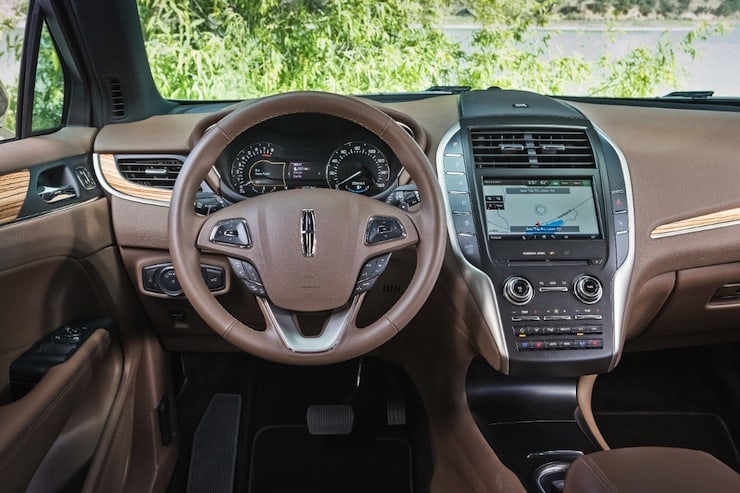
It’s easy to like the quality feel of the MKC’s leather upholstery, but the front seats felt exceptionally narrow, even to my slim backside. However, like the Escape, there’s plenty of usable space here, with decent storage for odds and ends and back seats that fold flat to boost cargo capacity.
Ford’s SYNC communications and entertainment suite is standard here. The automaker has worked to address complaints about it being overly fussy and slow to respond to its touchscreen commands, and to some degree, they’ve succeeded. However, it remains overwrought and hardly the best of its breed. For that, go try out Chevrolet’s MyLink or Chrysler’s UConnect, both of which are more straightforward to use.
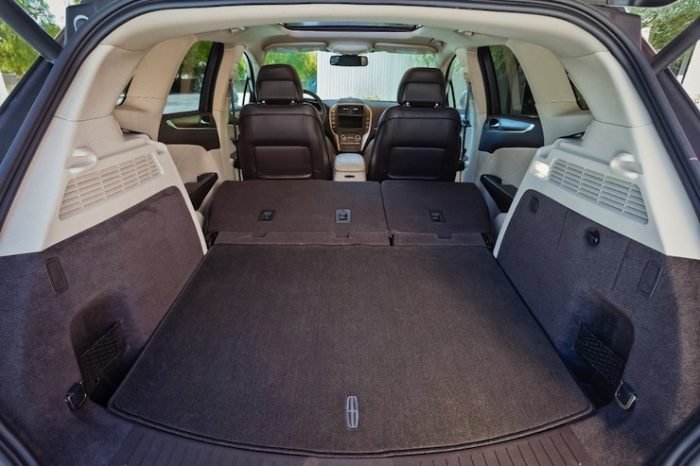
Lincoln’s official fuel consumption ratings for an MKC with the 2.3-litre engine are 12.9/9.2 L/100 km (city/highway); my real-world result in a mix of city and highway driving was 12.3 L/100 km.
Takeaway
Lincoln’s styling has attracted criticism, namely for the big, bold grille gracing the front end of all its current vehicles, but that is what it takes to stand out in a crowded segment; it’s that unhip image that’s holding the MKC to solidly mid-pack sales in a class that’s only going to get more crowded. Rumours of Lincoln’s death may be exaggerated, but the brand hasn’t found the fountain of youth just yet.
